I'll keep the background story brief about me and my horse Jobi for now. I'm sure it will develop itself with more posts. I owned him for many years and brought him up through advanced work in dressage using French Classical methods, life change forced me selling him only to later have the opportunity to buy him back. He was returned to me a very different horse and we are unweaving the many bad habits, resistances and new quirks.
Among those has been his complete inability to relax and stretch down into the snaffle while being ridden. Instead every effort to encourage him to stretch down and out has only resulted in further dropping of the back, raising of the head, neck and lateral resistance.
Here is where I inject the idea of incorporating the double bridle in an unconventional manner. Up to this point I had only ever worked him in a snaffle, even through collected work as that was all that was required. Now he distrusts the snaffle and any action made through it; so how do you break through a mental/emotional barrier with your horse and re-establish communication, trust and ultimately relaxation?
I decided to make an attempt by incorporating the double bridle. My reasoning went along these lines :
- The curb bit applies an action on the mouth completely different from that of a snaffle, separating any bad associations he may have with the snaffle bit and its action.
- The double bridle, as opposed to riding bitless or in a curb alone, allows me to transition from using the curb back to the snaffle in order to re-establish a good relationship with the snaffle bit and reduce or even eliminate further use of the curb bit.
- The action of the curb works on the poll which should, in theory, encourage lowering of the head and eventually stretching forward, down and out; the ultimate goal.
Generally speaking the double bridle is for many considered the coveted step towards further collected work and even the Grand Prix. For me it has become something outside the box, an effort to reach my horse through all of the baggage he's carrying.
I rode him for a time in the double without touching the curb reins, and even just on the snaffle rein alone the addition of the mullen-mouthed curb seemed to settle him some. Still, he refused to stretch down and out. His gaits could only progress so much and his physical conditioning could only improve to that limit as well.
Finally, I picked up the curb rein. I rode him holding the reins in the Fillis Method style, with the snaffle rein held between the thumb and index finger and the curb rein coming up through the bottom of my hands. I wanted to be able to influence each rein as separately as possible so to keep any confusion for him at a minimum with the new bit coming into play.
They say the curb bit in the double bridle acts on the skeletal structure of the horse, directly influencing the joints. Whereas the snaffle is influencing the muscular structure. The curb is a powerful addition to communicating with the horse, and also very important to be judicious with its use since it is a leverage force and therefore what amount of pressure you hold in your hands will be multiplied in the mouth of the horse you can easily overpower them.
Jobi's initial reaction was to bring the head higher – but still no different than his attempts to resist the snaffle rein. What was different with the curb however was shortly after raising his head he made another response and lowered his head, stretched his nose down and out and chewed the reins softly. A first since he has been back home with me.
Success
It is well documented that the curb does not act on the horse's mouth in a way that encourages lateral suppling or flexion. The function of the curb is to flex the neck longitudinally, lower the head and bring the nose inwards. I do however want to make the argument that a horse who is in resistance and head-high is also void of lateral suppleness and flexion, be it through action on the snaffle, curb or a bitless bridle. Meaning, that if the horse is resisting through the snaffle it will be lacking in suppleness as much as a horse worked solely in the curb bit which does not act on the mouth in a way to create lateral suppleness and flexion. It is important that the horse be able to work in relaxation, one of the base principles of dressage.
Jobi and I have had several rides now like this, a few of riding solely on the curb rein at walk and trot. Our latest ride however was on the snaffle alone and I am very happy to report that Jobi is making the connection and we've broken through much resistance. His walk has improved, his back is involved again and no longer braced. Transitions into trot are energetic and relaxed, missing the pogo-stick bounce.
There are times when one needs to act like a scientist in riding and training the horse. Theorizing solutions to problems and exploring rather than accepting what's been handed down in writing and popular practice. Asking questions is the start and by continuing to ask questions we open the door to new answers from our horse.
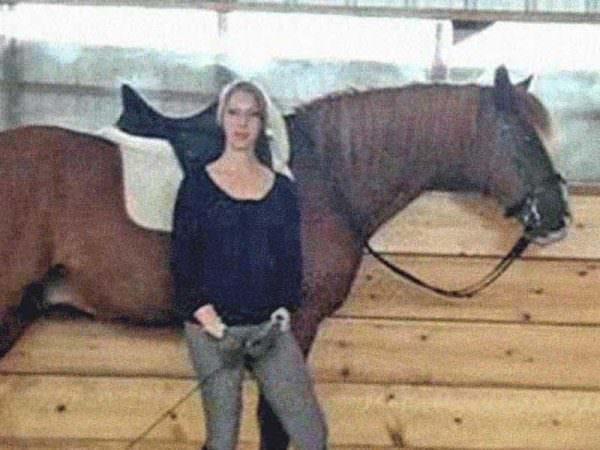

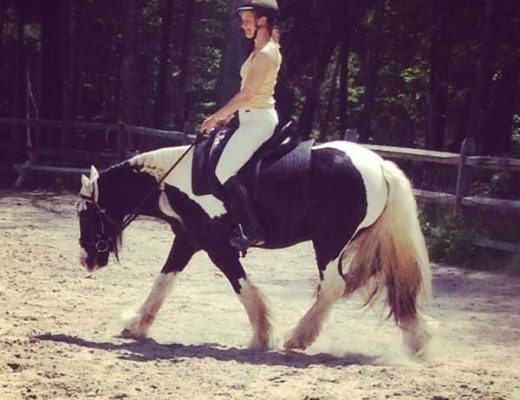
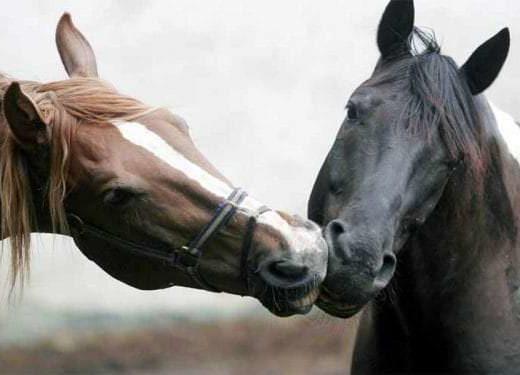
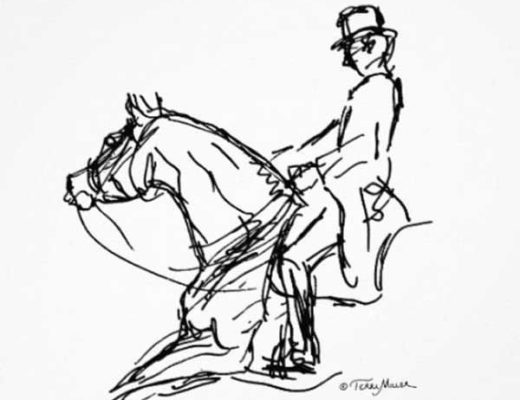
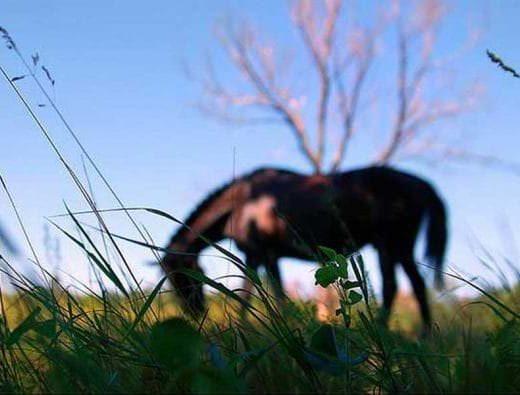
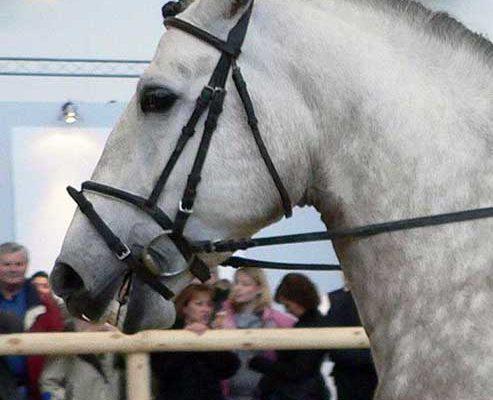
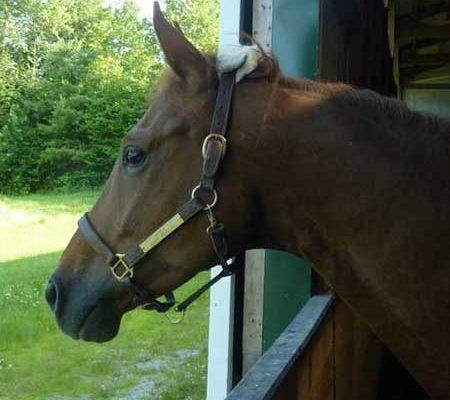
Erica,
I am reading two books right now. Kind of in tandem. One is Dr. Gerd Heuschmann’s book and the other is
‘Classical Schooling with the Horse in Mind: Gentle Gymnastic Training Techniques’ by Anja Beran and Dr. Gerd Heuschmann. Anja, when discussing the training of a young horse goes pretty quickly, once the horse is balanced and straight, into a double bridle. It interests me. When working with some of my jumpers and hunters I would occasionally use a rubber pelham but only with the lightest of hand. It is often used in the show ring to stop a runaway horse or to have more control but you only accomplish a horse with tension and a less than sensitive mouth. I wanted even finer communication. To do what you are describing above. I must profess I have never used a double bridle but understand what you are seeking to convey.
As always I love your posts and admire your intelligent, thoughtful and kind training.
Sue
Thank you Sue, your remarks are always so well articulated. 🙂
As you pointed out, there are many examples of working the horse in the double early on in their training, and even back to the classics of many Masters riding in the curb alone. The snaffle is a very new invention, has its many uses but not exclusively.
I am a big fan of Anja Beran’s work and she is a fine example of practicing what you preach. Her horses work looks relaxed yet powerful and shows enjoyment from both parties.
Perhaps some of the (or much of it..) hesitation in using the double is the lack of quality instruction paid to developing light hands in riders today? Of course it would have been a nightmare to hand a cavalryman the reins of a double right off and so much of modern dressage is based on the army’s application. Something to ponder on.
Previous to this, I have always worked horses up the levels in a snaffle solo. Most did not present the same kind of resistances that Jobi has currently though, it is fully body/mind/emotion. I was not immediately confident in applying the double in this case but open to the idea that perhaps veering off the beaten path could actually help, where staying on the path was in this case only continuing to enforce the resistances and keep us from moving forward.
Cheers,
Erica
Erica,
I agree that there is not enough quality instructors out there to help those with using a double bridle and the subtleties of it. I believe using your hand correctly is an art form. Our mind is linked to our responses with our bodies. Hands seem the first to react. Using Mindfulness is a huge help as well as lunge work. I cannot imagine a time in my life that I will not be refining my hands and body. Seeking a lighter and lighter touch.
I am very interested in how Marijke de Jong works. She uses a curb and the Brenderup cavesson as her snaffle. I do the same but use the Baucher snaffle as my curb and a bitless noseband as my snaffle. It works well with my Doerte who is so very sensitive. Doerte is a prime living example of how sensitive horse are. When working in hand with her you just have to touch her ribs lightly with your finger to get a response. She reminds you every time you work with her how very in tune horses are with touch and feeling.
Oliver, is less so on the ground but as soon as you get on him he is so very, very sensitive. It is frustrating for most people riding him but in the end they learn so much. He is a wonderful and patient teacher.
I look forward to more posts about your work with your lovely horse and the discoveries along the way.
hugs,
Sue
I had a similar problem with my Hannoverian mare. She had been handled in a heavy handed manner and refused to seek the bit at all. I tried a combination of in hand work with her using a cavesson and ridden work with a snaffle and cavesson-reins attached to both. I used the cavesson to get her strectching forward and down and the snaffle for “stellung” in order to engage the hindquarters. She has rediscovered her joy in movement and is so much more responsive. If you study your horse with attention and care I believe training can be customized to solve problems individually-if you understand the fundament, of course. Thank you for your original point of view. Great post!
I work hard at not getting my hands behind the withers and using a lifting action as opposed to a pulling one. Exploring the idea that horses can pull forward but not down, I do not play into the desire for either of us to hang on.
It’s tough, human nature to grab and pull as a first response. 🙂
Lifting is really good, play around also with moving your hands upwards then forwards when your hands want to move backwards and see what kind of response your horse gives you. I’ve noticed with some this can actually elicit a half-halt like response from the horse.